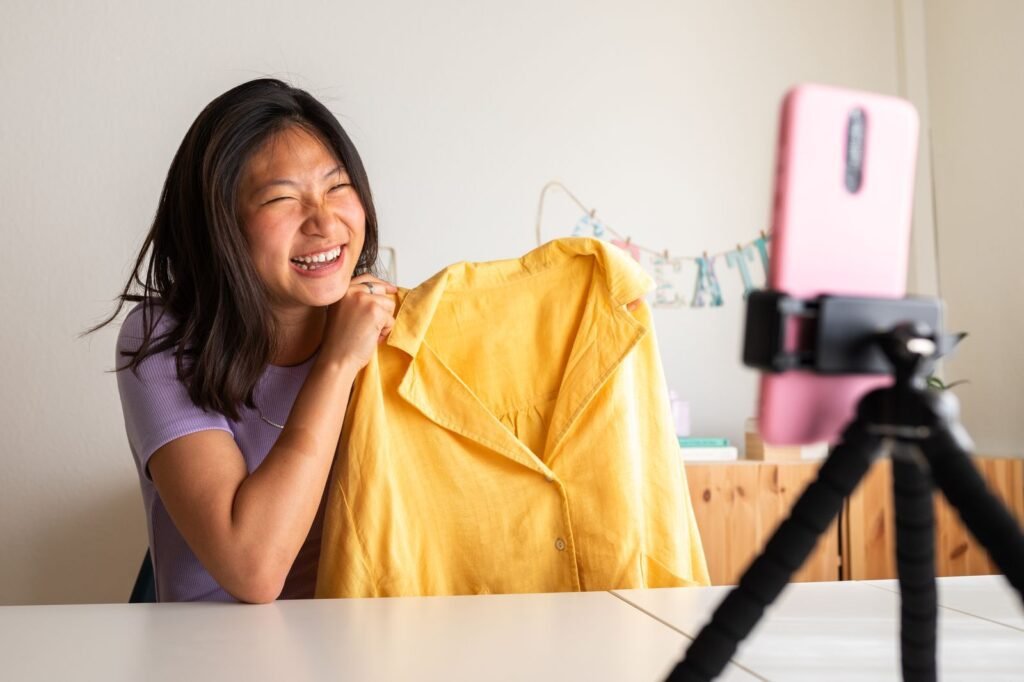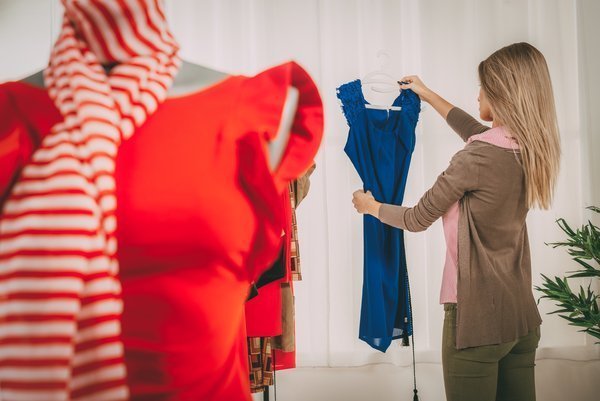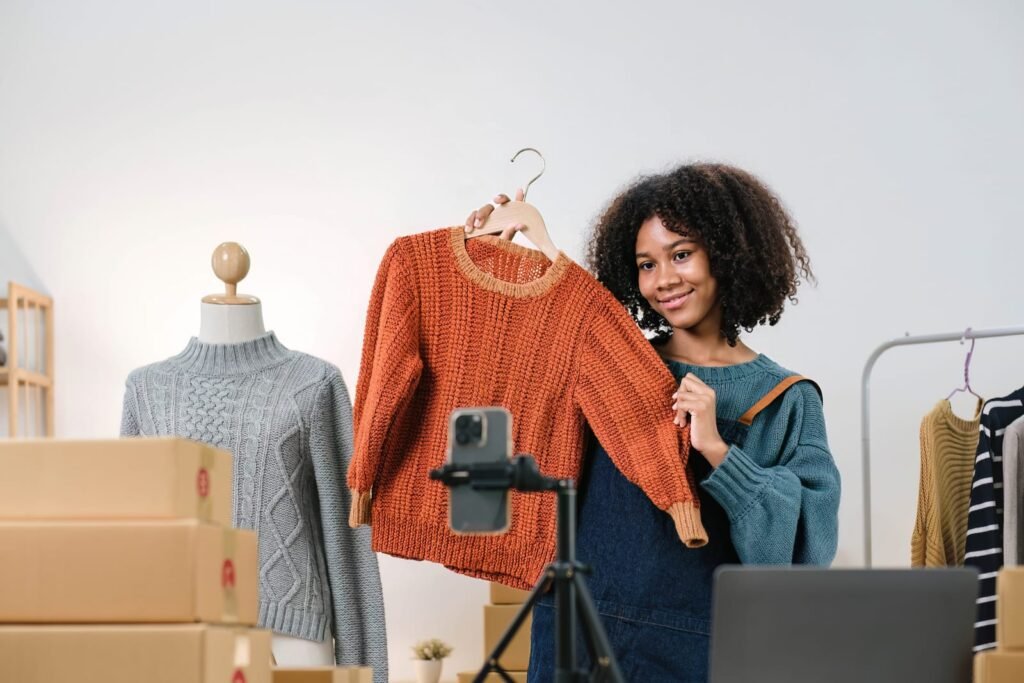- The Power of Social Media Influencers in Fashion
- Who are social media influencers?
- The Impact of Social Media Influencers on Fashion Trends
- The Evolution of Fashion Blogging to Influencing
- Ethics and Authenticity in Influencer Marketing
- Examples of Backlash / Controversy
- Niche markets within influencer culture
- Future Trends in Influencer Marketing: Shaping the Fashion Industry
- Predictions for How the Role of Social Media Influencers Will Evolve
- Conclusion: Influencers – The Future of Fashion?
- The Power of Social Media Influencers in Fashion
- Who are social media influencers?
- The Impact of Social Media Influencers on Fashion Trends
- The Evolution of Fashion Blogging to Influencing
- Ethics and Authenticity in Influencer Marketing
- Examples of Backlash / Controversy
- Niche markets within influencer culture
- Future Trends in Influencer Marketing: Shaping the Fashion Industry
- Predictions for How the Role of Social Media Influencers Will Evolve
- Conclusion: Influencers - The Future of Fashion?
The Power of Social Media Influencers in Fashion
Social media has revolutionized the fashion industry in the past decade, with influencers significantly shaping trends and driving consumer behavior. These influencers have gained a large following on social media platforms by sharing their style, beauty tips, lifestyle advice, and more. They have become key players in the fashion industry as brands seek to collaborate with them to reach a wider audience and increase sales.
The rise of social media influencers has been fueled by the accessibility of these platforms and their ability to connect people worldwide. Influencers come from all walks of life and can be anyone passionate about fashion or beauty.
They have gained credibility with their followers by cultivating an authentic online persona that resonates with their audience. This authenticity has helped them gain trust and influence over consumer behavior, making them valuable assets for brands seeking to drive sales in the highly competitive fashion market.
Who are social media influencers?

Social media influencers have built a significant following on one or more social media platforms, such as Instagram, YouTube, and TikTok. They become influential due to their content and ability to engage with their audience. Social media influencers can be anyone from celebrities to everyday people who share their interests with others on the internet.
Types of influencers (micro, macro, nano)
There are several social media influencers, including micro-influencers, macro-influencers, and nano-influencers. Micro-influencers typically have between 1,000-10,000 followers and often have a niche focus on specific industries such as beauty or food.
Macro-influencers have over 100,000 followers and can often be celebrities or well-known public figures. Nano-influencers refer to those with less than 1,000 followers but still hold considerable influence within their small community.
How they gain their following and build their brand
Social media influencers often gain followers by creating engaging content that resonates with their audience. They build their brand by creating a unique personality that sets them apart from other influencers in the same space.
Consistency is also key in building an influencer brand – posting regularly and engaging with followers helps build audience trust and loyalty. In addition to creating content that appeals to audiences’ interests, many social media influencers strategically collaborate with other brands or businesses to expand their reach and exposure.
By partnering with other companies aligned with the influencer’s values or niche interest areas, they can create sponsored posts promoting various products or services while retaining authenticity through genuine reviews. Overall there is no single path toward becoming an influencer; rather, it requires a blend of creativity, consistency in content creation & sharing, authenticity, and engagement with the community.
The Impact of Social Media Influencers on Fashion Trends

Social media influencers have become essential for brands to showcase their products to a wide audience. These influencers are field experts and have built substantial followings by sharing their knowledge and opinions. As a result, they possess a high level of trust among their followers, which influences purchasing decisions.
Social media has become the new runway in the fashion industry, with influencers dictating what is stylish and trendy. When an influencer posts about a product or collaborates with a brand, it can significantly impact consumer behavior and purchasing decisions.
The power of their reach comes from the authenticity that they bring to the table. Followers trust their favorite influencers because they perceive them as real people who genuinely care about their followers’ interests.
They can influence follower behavior and spur purchases by endorsing a product or showcasing how it fits into their daily lives. One example of a successful collaboration between an influencer and a brand is the partnership between Danielle Bernstein (WeWoreWhat) and Onia Swimwear.
After Bernstein posted photos on Instagram wearing Onia’s swimsuits, sales increased by 800%. This massive boost in sales proves how much influence an influencer can have over consumer behavior when working with a brand.
The Power of Influencer Marketing
Social media influencers’ impact on fashion trends has made influencer marketing one of the most effective marketing strategies for brands today. Companies recognize that partnering with relevant influencers offers immense potential to reach new audiences organically. It also helps create buzz around products that consumers might not be aware of.
Influencer marketing can take many forms, from sponsored posts to product reviews or even long-term partnerships where the influencer becomes an ambassador for the brand. However, no matter which approach a brand takes, it’s essential to find influencers who align with its values and aesthetics.
When brands partner with influencers their audience trusts, it can create a ripple effect that leads to increased brand awareness and loyalty. The power of influencer marketing is especially evident in the fashion industry, where trends change frequently.
By partnering with influencers who have their finger on the pulse of the latest styles, brands can stay ahead of the curve and ensure they’re always in vogue. Additionally, when an influencer posts about a product or brand organically without paid promotion, it creates a level of authenticity that traditional advertising cannot match.
The Evolution of Fashion Blogging to Influencing

The fashion industry has undergone a significant change with the rise of social media influencers. From being fashion bloggers and niche content creators, they have become a critical force that influences consumer behavior and shapes fashion trends.
The evolution from blogging to influencing began around the mid-2000s when blogging became a popular medium for sharing personal style and fashion inspiration. It was an era when blogs were online journals or diaries, and bloggers shared their thoughts on various topics, including beauty, travel, food, and fashion.
Fashion blogging gained popularity due to its visual nature, with bloggers posting outfit photos and detailed descriptions of their clothing pieces. Brands started noticing this new wave of content creators and collaborating with them to promote products and services through sponsored posts.
The Role That Instagram Played in the Rise of Influencer Culture
Instagram played an integral part in the evolution from blogging to influencing. In 2010, Instagram was launched as a photo-sharing app that allowed users to post photos using different filters. Although initially created just for fun between friends, it quickly gained popularity among celebrities who used it as a platform to connect with fans.
In 2012 Instagram introduced hashtags allowing users to organize content by category, making it easier for brands looking for influencers in specific niches like beauty or fashion. Influencers could visually showcase their creative talents on Instagram without needing long-form blog posts, giving them greater reach than ever before.
Instagram rewards authenticity over perfectionism, meaning influencers who create genuine connections through relatable captions often perform better than those who only focus on the perfect image. As social media platforms have evolved, so too has influencer marketing; today’s audience is far savvier than ever before when it comes to sponsored content so influencers must keep upping their game to remain effective.
Ethics and Authenticity in Influencer Marketing
When it comes to influencer marketing, transparency, and authenticity are crucial. Consumers want to know when they are being advertised to, and they want to trust the influencers they follow. Brands and influencers must be upfront about sponsored content or partnerships.
Unfortunately, there have been instances where influencers failed to disclose sponsored content or tried to deceive their followers. One infamous example is when Kim Kardashian was sued for not disclosing her paid posts on Instagram.
This led to increased scrutiny of influencer marketing and the need for clear guidelines. In addition to transparency, authenticity is also key in influencer marketing.
Followers want to believe that the products being promoted by their favorite influencers are genuinely loved and used by them. If an influencer promotes a product solely because they were paid for it without actually liking it, this can lead to backlash from followers who feel deceived or misled.
This is why it’s important for both brands and influencers to only collaborate on products that align with the influencer’s brand and values. When done correctly, influencer marketing can be effective while maintaining trust with followers.
Examples of Backlash / Controversy

One example of a controversial partnership was between YouTuber Logan Paul and clothing brand Busted Tees in 2017. Paul was criticized for promoting a shirt with a racist slogan which offended many of his followers. In response, he deleted the tweet promoting the shirt but not before receiving backlash from his audience.
Another example was when Instagram model Elle Darby reached out to hotels asking if she could stay there for free in exchange for featuring them on her social media channels as part of her travel blog career aspirations. The hotel responded negatively by publicly shaming her request through social media, leading thousands of people to attack Darby online.
These examples highlight the importance of being careful and thoughtful about influencer marketing. Both brands and influencers must consider their potential impact on their audiences and ensure they are genuine and transparent in their collaborations.
Niche markets within influencer culture
How niche markets have developed within influencer culture
One of the most interesting things about the rise of social media influencers in the fashion world is how they have helped create and shape niche markets within the industry. For instance, modest fashion has seen a significant surge in popularity in recent years, largely thanks to social media influencers promoting more conservative styles.
These influencers cater to an audience that wants to dress stylishly but also values modesty for religious or cultural reasons. Sustainable fashion is another niche market that influencers have shaped.
As consumers become increasingly environmentally conscious, many seek clothing made using sustainable practices or materials that are better for the planet. Influencers prioritizing sustainability and eco-friendly fashion have brought attention to this trend and encouraged brands to adopt more sustainable practices.
How are these niches being shaped by influencers?
In addition to helping create and popularize niche markets within the fashion industry, social media influencers are also actively shaping these niches. They can influence what people buy and wear by sharing their style and preferences with their followers.
For example, an influencer specializing modestly might only feature outfits that cover a certain amount of skin or feature looser-fitting silhouettes. Over time, this can influence her followers’ style choices as they adopt similar looks.
Similarly, an influencer who prioritizes sustainable fashion might only promote brands with eco-friendly credentials or encourage her followers to shop second-hand. Overall, it’s fascinating to see how social media has enabled influencers to build massive followings, use their platforms to shape trends and create new markets within the fashion industry.
Future Trends in Influencer Marketing: Shaping the Fashion Industry
Influencer marketing constantly evolves, and looking ahead to future trends is important. One such trend is the rise of virtual influencers – computer-generated characters with realistic appearances and personalities who can interact with real-world users on social media platforms.
While still in its early stages, fashion brands have tapped virtual influencers for collaborations and sponsorships. Another trend is the increasing importance of diversity and inclusivity in influencer marketing.
Consumers demand more representation from brands, and influencers representing marginalized communities are gaining more visibility. But perhaps the biggest trend on the horizon is integrating augmented reality (AR) into influencer marketing campaigns.
AR allows consumers to virtually try on clothes without leaving their homes, making online shopping more interactive and engaging. Brands like Nike and Sephora have already experimented with AR technology, but as it becomes more accessible, we expect it to become a staple in influencer marketing.
Predictions for How the Role of Social Media Influencers Will Evolve

The role of social media influencers will continue to evolve as they become even more important players in shaping fashion trends. As consumers demand authenticity from their favorite influencers, we can expect them to share even more personal moments from their lives – not just curated content for sponsored posts.
We may also see a shift toward smaller micro-influencers with smaller followings but higher engagement rates. These nano- or micro-influencers are often seen as more relatable than macro-influencers with millions of followers.
Another prediction is that influencers will increasingly be seen as entrepreneurs rather than content creators or celebrities. As they build their brands and establish themselves as thought leaders in specific niches, they may develop their product lines or partner with brands beyond sponsored posts.
The future looks bright for social media influencers and their impact on the fashion industry. They will remain key players in shaping fashion trends for years as long as they prioritize authenticity, transparency, and diversity.
Conclusion: Influencers – The Future of Fashion?
Social media influencers have revolutionized the way we consume and interact with fashion. These digital stars have become integral to our daily lives from Instagram to TikTok. While some may dismiss them as mere influencers, their impact on the fashion industry cannot be understated.
As we look ahead to the future of influencer marketing, one thing is clear: influencers will continue to shape the fashion industry in new and exciting ways. They will inspire us with their outfits, share new styles from emerging designers, and challenge conventional beauty standards.
They may even help usher in a more sustainable and ethical era. So whether you love or hate them, one thing is certain – social media influencers are here to stay.





















